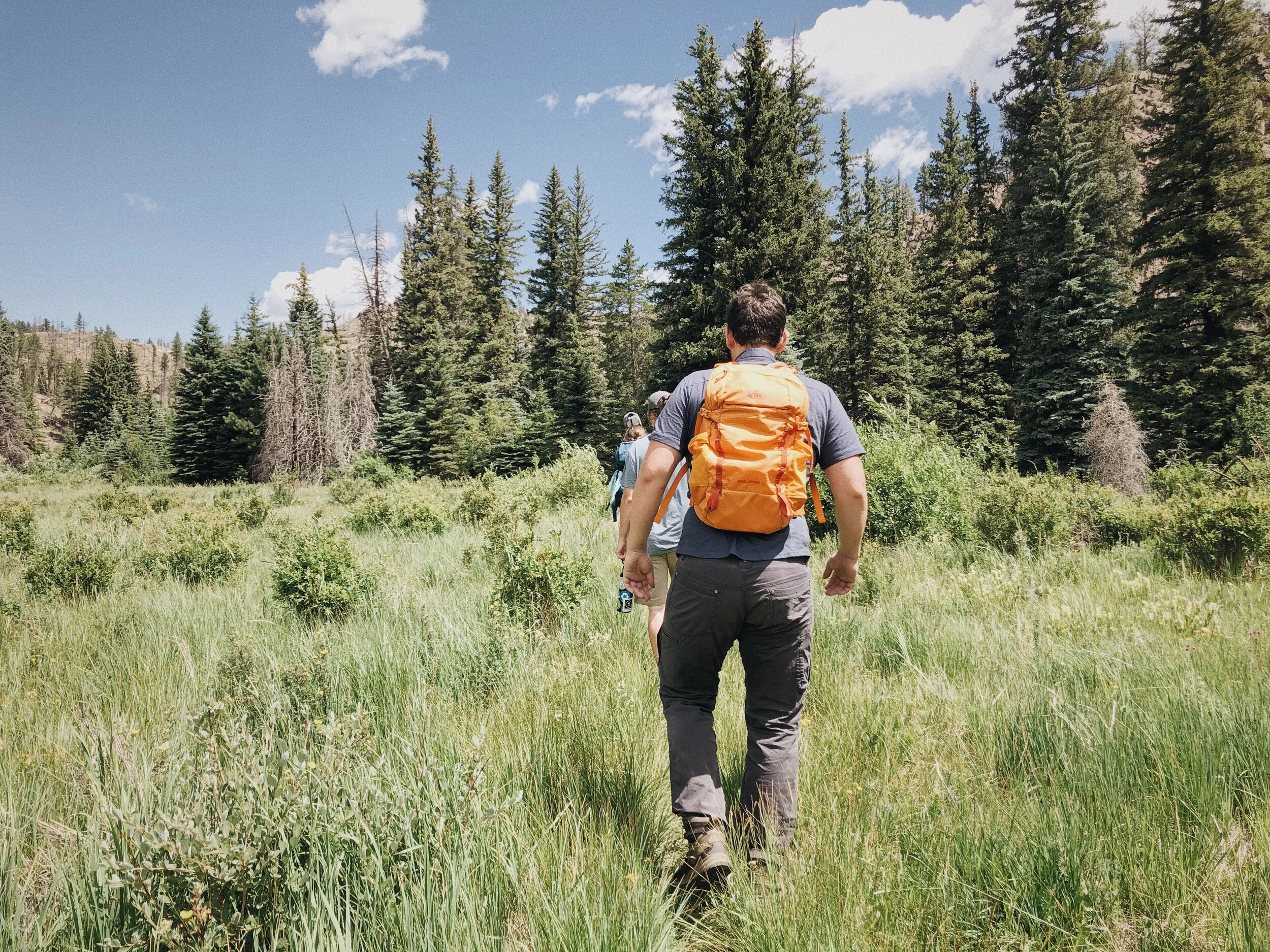Day Hiking Checklist | 10 Essentials for a Safe and Awesome Hike

What to Bring on Your Next Day Hike Excursion
This post has been updated!
Although I would love to spend more time taking two-day, three-day, or even month-long hiking excursions, I’m among those whose most frequent hikes max out at about a day long (but I still dream of you, PCT *sigh*). Whatever the length of the hike, I never leave home without a properly planned pack. Season, climate, and personal preference will often dictate what you carry in your bag, but day hike essentials typically remain the same across the board.
First and foremost, always have an up to date map of your hike handy. You can obtain trail maps for free online and save them to your phone, or use the ever-popular AllTrails app. The below list includes ten additional safety-minded essentials to keep in your pack for a day hike. Note: This post contains affiliate links. I do not endorse anything I haven't or wouldn't personally use.
1. A KILLER PACK, OBVIOUSLY
Before you pick a color, choose a pack based on comfort. My personal choice is anything Kelty. Soft, padded shoulder straps and water resistance are a huge factor for me since I also carry camera equipment, but it’s also a great travel pack with tons of pockets that serve their own specific purpose. I chose my pack because it’s perfect for all-around travel and serves multiple purposes, but you don’t need all the bells and whistles for a day hike. A regular ol’ backpack will certainly do as long as it’s comfortable and durable.
2. FIRST AID KIT
You can DIY with stuff you have laying around or cover all of your bases by purchasing a pre-made kit. Though you’ll most likely survive a day hike will just the essentials, it never hurts to be extra-prepared. The key to purchasing a pre-made first aid kit is knowing the function of each product and how to use it. Without that knowledge, those loperamide tablets are pretty useless.
3. WATER AND BACKUP PURIFICATION SYSTEM
A no-brainer when it comes down to it. Dehydration is the enemy of all outdoor recreation and can turn an otherwise happy hike into hell. However, we’re all guilty of packing too little water. Pack your favorite eco-friendly water bottle or water bladder plus an extra just in case. If you can’t pack extra, have some iodine tablets on hand or other basic water purification knowledge.
4. SKIN STUFF
I like to call it the holy trinity of hiking skin care: bug repellent, sunscreen, and lip balm. Few things will make you happier than skin that doesn’t itch, sting, or crack. Sunscreen doubles as a body moisturizer too if dryness irritates you as much as it irritates me. Another note: you can still totally get sunburn in winter.
5. HEADLAMP OR FLASHLIGHT
When it comes to hiking flashlights, the brighter the better. Even in broad daylight, portions of forested hikes can get so thick that there’s only a dappling of light available. Should you get lost, it’s a heck of a time making a shelter in the dark. There are plenty of flashlights small enough to fit in your front pocket, so there’s no reason not to have one in your pack.
6. HANDKERCHIEF OR BANDANA
Keep the sweat from your eyes, tie your hair back, use as a flag, compress wounds, filter water. I've even used bandanas as shirts a few times. They take up so little space in the bag and provide innumerable uses.
7. A GOOD KNIFE/MULTI-TOOL
Knives and multi-tools may seem unnecessary during a short day hike, you’ll be thankful for it should you ever get lost. For that reason, make sure you get a knife with a sharp blade and sturdy build. Our favorites are Swiss Army or Leatherman, but leave it up to your personal preference (and state carry laws).
8. R/C GEAR
R/C = Rain and Cold. Rain repellent shells and fleece are typically lightweight enough to get the job done without adding too much weight to your pack. Fleece also dries faster than most types of cloth, but I wouldn’t recommend it during the summer months. It’s always a good idea to pack extra clothes even if you’re absolutely certain of the weather.
9. FOOD AND WATER
I was once so unprepared for the caloric requirements of an Adirondack hike with my friends that eleven of us shared a friggin’ apple 10 miles in. We were young and foolish. Analyze your hike and pack high-calorie foods accordingly. Apples are Ty’s choice because of their portability, but granola bars and trail mix will never fail. As with all pre-packaged food, take care to pack out all wrappers and packaging. Double check your resting areas to make sure nothing is left behind.
9. FIRE
I honestly don’t mean to get incredibly safety-oriented in this post, but actually I do. It’s easy to get lost in broad daylight, but it’s also easy to ensure you’re prepared if you do stray from the trail. Controlled fires help in a few ways: boiling water for purification, signalling, and keeping warm. Get yourself some outdoor matches and tuck them safely away.
Optional:
Camera. A phone is a fine substitute for the occasional shooter and will save you room in your bag (assuming you’re bringing it anyway).
Phone with portable solar charger. Download a compass app while you’re at it.
Company. Although I’m a huge fan of riding solo, I’ve not only shared fond memories on the trail with people I love, but I’ve always felt safer. You never know what you may encounter, and there’s power in numbers.
The best part of this list is that you probably already have most items and they won't take up too much space in your pack or weigh you down. What else do you pack during your day hikes? Any essentials I missed? Leave your tips in the comments below!










Whatever the length of the hike, never leave home without a proper pack. Season, climate, and personal preference will often dictate what you carry in your bag, but these 10 day hike essentials typically remain the same across the board.